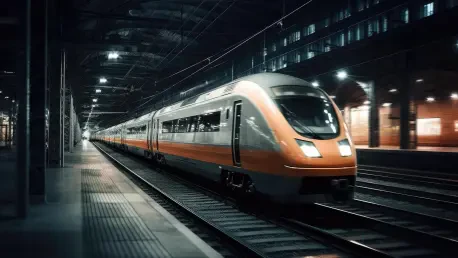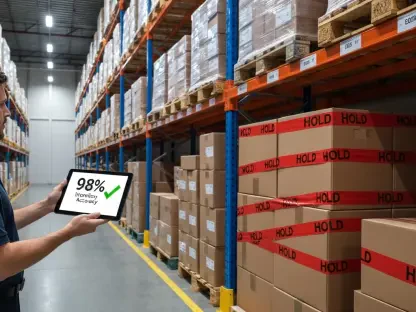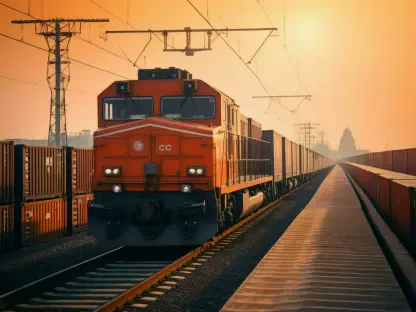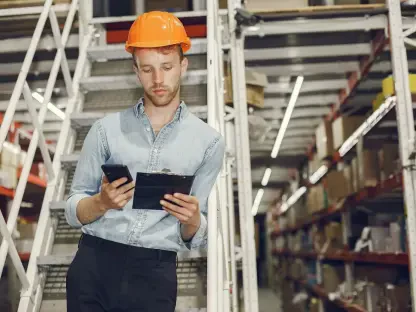In this insightful interview, we sit down with Rohit Laila, a seasoned expert in the logistics industry, to explore urban transportation planning with a specific focus on Copenhagen’s ambitious M5 metro line project. Rohit shares his extensive knowledge accumulated over decades of experience, providing a unique perspective on how urban transit systems can adapt to growing populations and evolving technologies.
Can you tell us more about the main goals of the M5 metro line project in Copenhagen?
The M5 metro line project in Copenhagen is designed to address the challenges of an expanding city landscape and an increasing population. Its primary goal is to enhance transport capacity and support sustainable mobility while alleviating congestion. The line is part of a broader vision to better connect existing urban areas with new, developing regions, thereby making public transport more robust and accessible.
How does the M5 metro line address the anticipated population growth in Copenhagen by 2050?
As Copenhagen is expected to grow by about 130,000 residents by 2050, the M5 line is essential for accommodating this increase. The project aims to build a transport network resilient enough to handle enhanced commuter demand. By expanding connectivity across strategic city areas, it facilitates efficient movement, reducing pressure on existing infrastructures.
What specific steps are being taken to ensure that the metro system supports sustainable mobility?
Sustainability is a core focus of the M5 project. This is achieved through several means, including the adoption of automated technologies and smart design principles that minimize environmental impact. By seamlessly integrating advanced data analytics and renewable energy sources, the system is set to operate with greater ecological efficiency.
Can you explain the significance of the political agreement reached in March 2025 for the development of the M5 line?
The political agreement in March 2025 marked a pivotal step for the M5 project, securing a 16-kilometer stretch from Copenhagen Central Station to Lynetteholm. This consensus unlocked essential funding and infrastructural commitments, allowing the project to move forward with a clear roadmap and garnering support from various stakeholders.
What are the key characteristics of the 16-kilometer section of the M5 line that has been approved?
This approved section will feature nine new stations and the introduction of 14 new metro trains. It focuses on improving connectivity across crucial urban regions and is designed to be an integral part of a potential full circular loop if future expansions occur.
How will the introduction of 14 new trains impact the existing metro system in Copenhagen?
The addition of 14 new trains will significantly enhance service frequency and capacity on the metro network. This expansion provides more options for commuters, reduces wait times, and contributes to easing congestion on existing lines by distributing passenger loads more effectively.
Could you elaborate on the phased approach of the project and the timeline planned for each phase?
The M5 metro line project will unfold in two key phases. The initial phase is projected to open in 2036, followed by a second phase targeted for completion by 2045. This staged rollout allows for manageable implementation of infrastructure while assessing and integrating emerging technologies effectively.
How will the M5 metro line use insights from previous metro developments in Copenhagen?
This project builds on the successful elements of prior metro developments in the city, learning from past challenges and innovations. This experience is crucial for developing better requirements and improving system design, to ensure the M5 is not just operable and maintainable, but also adaptable and future-ready.
What does it mean for the M5’s design to focus on operability, maintainability, extendability, and renewability?
The focus on these elements ensures that the M5 line is efficient in its daily operations, easy to maintain, and resilient to future changes and technologies. The line can be extended and upgraded with minimal disruption, maintaining high service standards and accommodating emerging travel needs.
What challenges are you addressing to avoid long shutdowns for extensions or upgrades on the M5 line?
Minimizing service disruption during upgrades or extensions is a priority. The use of modular components and flexible system architecture allows for updates to be done in a manner that doesn’t significantly interrupt passenger services, maintaining continuity in operations.
How will the test lab in Copenhagen contribute to the M5’s development?
The test lab will play a crucial role in validating new technologies and procedures before deployment on the metro line. It enables controlled experimentation and troubleshooting, ensuring that any innovations can be smoothly integrated into the M5’s operations.
What benefits will the independent control and maintenance center bring to the metro line?
Having an independent control and maintenance center means that system monitoring and servicing can be performed without affecting other lines. This enhances the operational flexibility and response times to issues, fostering a more reliable and efficient metro system.
What role will advanced data and sensor technologies play in improving the metro’s operational efficiency?
Advanced data and sensor technologies are central to boosting operational efficiency. By providing real-time insights into passenger movement and system performance, these technologies enable rapid adjustments and informed decisions, ensuring a more fluid and responsive transit experience.
How will real-time passenger tracking through LiDAR sensors impact the system’s response to changes?
LiDAR sensors offer precise tracking of passenger flow, which helps the system swiftly adapt to fluctuations in crowd levels. This ability to dynamically adjust services in real-time enhances commuter safety and optimizes capacity utilization during peak times and special events.
Could you describe the concept of a “dynamic operational model” using historical and live data through a digital twin?
The dynamic operational model uses a digital twin to simulate and analyze metro operations. By integrating historical and current data, it predicts patterns and outcomes, allowing for proactive management of service levels, maintenance, and emergency responses, ensuring seamless operations.
How will the M5 line manage large-scale events like football matches or changes in weather?
The M5 line is equipped to handle the demands of large-scale events and weather changes through its flexible scheduling and real-time data integration. Advanced forecasting and responsive measures will mitigate the impact of sudden passenger surges or delays caused by adverse weather.
What improvements are planned for the passenger information system in the new metro line?
The passenger information system will be upgraded to provide real-time updates and guidance, enhancing the travel experience. It will intelligently communicate service changes and delays, providing passengers with timely and accurate information for better trip planning.
How does full automation help in making timetable adjustments more efficiently?
Automation streamlines the process of timetable adjustments by enabling immediate changes to schedules without the logistical complexities of reassigning staff. This leads to faster implementation of service changes, improving system flexibility and passenger satisfaction.
Why is it important to design the M5 line to accommodate future technologies and system innovations?
Ensuring the M5 line can integrate future technologies is crucial for its longevity and relevance. By designing with adaptability in mind, the metro can continuously evolve and incorporate new innovations, keeping pace with urban growth and technological advancements.
How does building with adaptability in mind ensure that the metro line remains fit for purpose as the city grows?
An adaptable design ensures that the metro line can respond to changing urban needs, population dynamics, and technological advancements. This allows the system to remain efficient and effective, supporting the city’s evolving demands far into the future.









